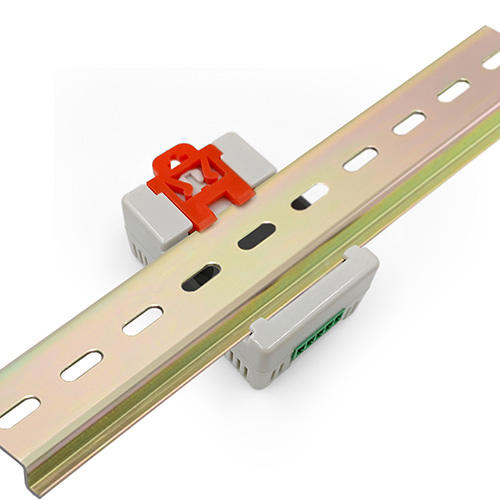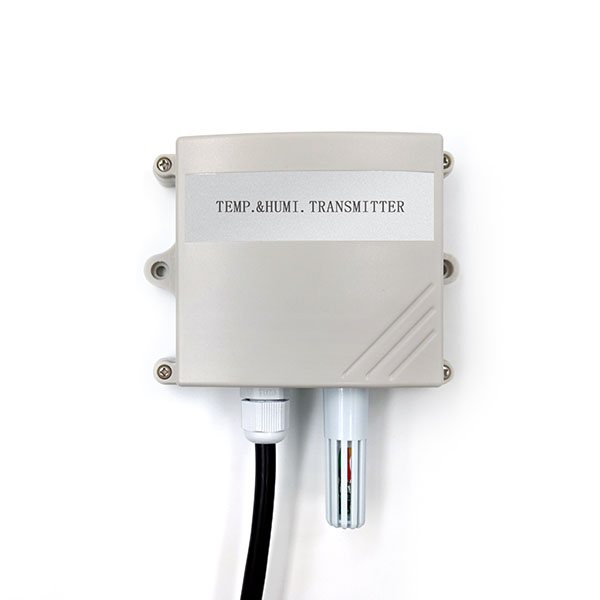How does temperature and humidity sensor work
If you want to understand How does temperature and humidity sensor work, you must first understand what types of temperature and humidity sensors there are. The following is a detailed introduction for you.
Types of Temperature sensors
According to the working principle, there are the following types of temperature sensors:
1.Sensor designed based on metal expansion principle
Metals elongate in response to changes in ambient temperature, so sensors can signal this reaction in different ways.
2.Bimetal sheet sensor
The bimetal sheet is composed of two metals with different expansion coefficients stuck together. As the temperature changes, the expansion degree of material A is higher than that of another metal, causing the metal sheet to bend. The curvature of the bend can be converted into an output signal.
3.Bimetal rods and metal tube sensors
As the temperature increases, the metal tube (material A) undergoes linear expansion, resulting in an increase in its length. Meanwhile, the non-expanding steel rod (metal B) does not experience any change in length. This differential expansion between the two materials causes the metal tube to change its position. Consequently, the linear expansion of the metal tube is translated into a change in position, which can be further converted into an output signal.
4.Sensors designed with deformation curves for liquids and gases
When the temperature changes, liquids and gases will also change in volume accordingly.
Various types of structures can convert this change in expansion into a change in position, thus producing a position change output (potentiometer, sensing bias, baffle, etc.).
5.thermistor temperature sensor
Thermistors are temperature sensors made of semiconductor materials, and most of them exhibit negative temperature coefficients, meaning that their resistance decreases as the temperature increases. They are highly sensitive temperature sensors due to the large resistance changes they undergo in response to temperature variations. However, the linearity of thermistors is often poor and can be influenced by the manufacturing process.
Thermistors are small in size and have fast response times to temperature changes. However, they require a current source for operation, and their small size makes them prone to self-heating errors, where the generated heat affects their own temperature reading.
Thermistors measure absolute temperature using two lines, offering better accuracy. However, they are generally more expensive than thermocouples, and their temperature measurement range is smaller. They are well-suited for applications that require fast and sensitive temperature measurements, particularly in current control scenarios. The small size of thermistors is advantageous in space-constrained applications, but precautions must be taken to prevent self-heating errors.
Additionally, thermistors have specific measurement techniques. The small size allows them to quickly stabilize without causing a significant thermal load. However, they are also fragile, and subjecting them to high currents can result in self-heating. Since thermistors are resistive devices, any current passing through them generates heat. Therefore, it is recommended to use a small current source. Exposing a thermistor to high levels of heat can cause permanent damage.
6.Thermocouple Temperature Sensor
A thermocouple is composed of two metal wires of different materials that are joined together at one end. When this end is exposed to heat, a potential difference is generated in the thermocouple circuit. By measuring this potential difference, the temperature can be calculated. The term “thermocouple” is used because it requires two conductors made of different materials.
Thermocouples are made from various materials to accommodate different temperature ranges, and their sensitivity varies accordingly. Sensitivity refers to the change in output potential difference when the temperature at the hot junction changes by 1℃. For most metal-based thermocouples, this value ranges from 5 to 40 microvolts per degree Celsius.
One advantage of thermocouple temperature sensors is that their sensitivity is independent of the material’s thickness. This allows for the creation of very thin temperature sensors. Additionally, the metal materials used in thermocouples have excellent ductility, enabling these tiny temperature sensing elements to respond quickly to rapidly changing processes.
Thermocouples are widely used as temperature sensors due to their versatility and wide temperature range. They can operate in various atmospheric environments and offer durability at a low cost. Thermocouples are simple and easy to use, as they do not require a power supply. They are the most affordable temperature sensors available. However, it’s important to note that thermocouples may not be suitable for high-precision measurements and applications.
Types of humidity sensors
The humidity sensors of humidity sensors are divided into two types: resistive type and capacitive type.
The characteristic of the humidity-sensitive resistor is that the substrate is covered with a film made of humidity-sensitive material. When water vapor in the air is adsorbed on the humidity-sensitive film, the resistivity and resistance value of the element change. Use this characteristic You can measure humidity.
Humidity-sensitive capacitors are generally made of polymer film capacitors. Commonly used polymer materials include polystyrene, polyimide, butyrate acetate, etc. When the ambient humidity changes, the dielectric constant of the humidity-sensitive capacitor changes, and its capacitance also changes. The capacitance change is proportional to the relative humidity.
The above are all the classifications and working principles of temperature and humidity sensors. I hope it will be helpful to you.







